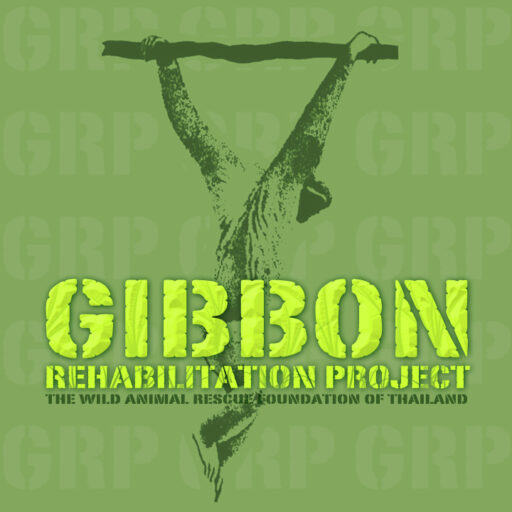SUPPORT US
GIVE GIBBON A CHANCE FOR A NEW LIFE
Most of the Gibbons we take care of come to us in a pitiful state. Malnourished, abused, traumatised and often diseased. It takes years of dedicated care to get our wards to a healthy state where they can be integrated back with other Gibbons, let alone released back into the wild. Several of the Gibbons at our centre are disabled, missing legs, arms and hands, after being beaten by their previous owners into submission. Sadly these Gibbons can never be released into the wild, but we can still give them a happy quality of life regardless.
This project is about doing the right thing in redressing the exploitation of these sensitive animals, and giving them a chance for a happy wild existence during the remainder of their short lives.
The lucky Gibbons are those who bond as families. Experience has taught us that family units have a much greater chance of returning to the wild than individual animals. The chances of success are even greater if they are released with an infant.
Releasing Gibbons back into the wild takes a long time. Initially they will spend 2-3 years being nursed back to health, and hopefully eventually encourage to bond with another Gibbon. Gibbons behavior is the closest to humans. They live in family units only, not groups, and they bond for life roaming in a 2 Square Km (approx.) area which they are very territorial about.
Rehabilitation of Gibbons back to the wild, is a very slow methodical, painstaking process perfected after years of research and study. Once a pair of Gibbons is judged fit for release they will be transferred to Baan Chum Pee in Chiang Mai and placed in a training cage, lower down in the forest, in order to acclimatize themselves with the local environment and food. After 2-3 months, they will moved higher into the forest into a bamboo release cage where they will stay for 2-3 weeks, increasingly encouraged to leave the cage to forage for themselves, but still having use of the cage to shelter in, until eventually they are closed off from the cage and food supply. Even after this much time, some Gibbons are unable to stay in the wild and must be taken back to the sanctuary. The Gibbons have to undergo many stages before they are able to fend for themselves in their natural habitat. Then the difficult process begins, since for the next two years after release, they must be tracked – daily for the first year – to ensure they are healthy and coping well.
All during this time the volunteers and staff must keep their distance to avoid the Gibbons becoming attached to them.
THERE ARE MANY WAYS YOU CAN SUPPORT US.
ADOPTION PROGRAM
With our gibbons adoption programs, you will get updates on selected gibbon of your choice.
DONATE NOW
There are still more than 50 gibbons out there waiting in a queue to have there chances to be part in our rehabilitation process.
FUND RAISING SHOP
Visit our online fund raising shop where 100% of money (excluded shipping cost) goes directly to help gibbons.
